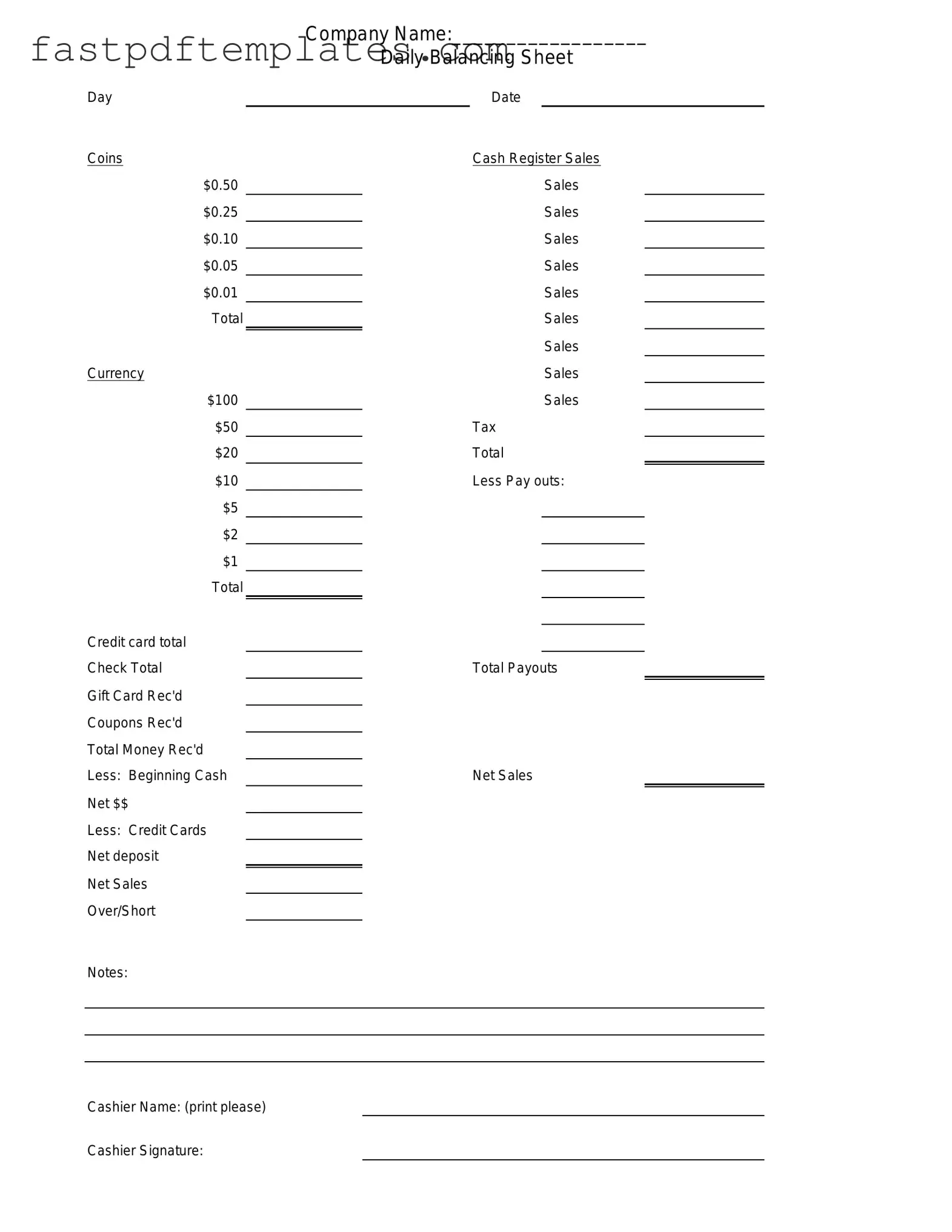The Cash Register Reconciliation Report serves a similar purpose to the Cash Drawer Count Sheet. Both documents track cash transactions and ensure that the amounts recorded match the physical cash on hand. The reconciliation report typically summarizes daily sales, detailing cash, credit, and other payment methods. By comparing the totals, discrepancies can be identified and addressed, just as with the count sheet, which focuses specifically on cash drawer balances.
The Daily Sales Report is another document that parallels the Cash Drawer Count Sheet. This report provides an overview of all sales made during a specific day, including cash transactions. While the Cash Drawer Count Sheet focuses on verifying cash in the drawer, the Daily Sales Report offers a broader perspective, capturing all sales activities. Together, they provide a comprehensive view of a business's financial performance for the day.
The Petty Cash Log also shares similarities with the Cash Drawer Count Sheet. Both documents are used to track cash flow within a business. The Petty Cash Log records small, everyday expenses, while the Cash Drawer Count Sheet ensures that the cash in the register matches sales records. Each document plays a crucial role in maintaining accurate financial records and preventing discrepancies.
The Bank Deposit Slip is another document that aligns with the Cash Drawer Count Sheet. Both are essential for managing cash flow. The Bank Deposit Slip records the amount of cash being deposited into a bank account, while the Cash Drawer Count Sheet verifies the cash available at the end of a business day. Accurate completion of both documents helps ensure that cash is properly accounted for and securely handled.
The Inventory Count Sheet is similar in its method of tracking physical assets. While the Cash Drawer Count Sheet focuses on cash, the Inventory Count Sheet tracks the quantity of products available for sale. Both documents require careful counting and recording to ensure accuracy. They are vital for maintaining proper financial oversight and ensuring that all assets are accounted for.
Finally, the Expense Report can be compared to the Cash Drawer Count Sheet. Both documents serve to track financial transactions, though they focus on different aspects. The Expense Report details expenditures made by employees, while the Cash Drawer Count Sheet focuses on cash sales. Both are essential for maintaining a clear picture of a business's financial health and ensuring that all transactions are properly documented.

